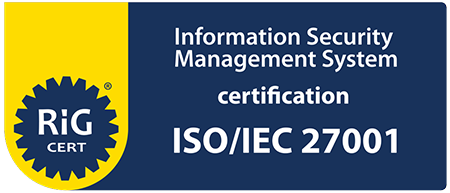Rapidly changing events require quick decisions and an overall change in the organisation's management style. Over the past two years, leaders have significantly changed their leadership styles. But what distinguishes leadership in crisis mode, and how leaders could retain their employees in such a situation.
The operating rhythm in which managers meet, discuss and take action must be consistent with the evolution of the crisis. This does not mean speeding up existing processes, but instead creating entirely new ones. Extreme uncertainty turns upside down the existing procedures related to the daily operational tasks in the organisation. Leaders need to work together to analyse the current situation, consider its practical implications, explore how it might evolve and implement the necessary actions. This is especially true for employee retention. Here are a few things you can do to retain employees if you're a team leader and you have to work in a crisis mode.
1. Engagement. Use different channels to listen, learn and understand your employees' opinions and attitudes or the reason for their dissatisfaction. It's important to respond to their feedback and make changes to adjust the course. If employees don't see any changes made after the listening sessions, they will feel that their input, experience and knowledge is not valued.
Employees want to be respected as individuals, so it's critical to acknowledge their different needs and desires within the team and value their diverse backgrounds and professional aspirations. Provide psychological safety for employees, motivate them to feel comfortable sharing and exchanging information and experience, take risks, not be embarrassed by their vulnerability and emotions, and not suppress disagreement and honesty.
Communicate the realities of the challenge the company is facing and its impact. Create an environment for employees that encourages them to be active, participate and contribute with innovative ideas without anxiety. Engage them in shaping an action plan, so they have a sense of ownership while executing the projects, removing career obstacles and solving issues. This practice sends the important message that you trust and value them. In addition, results are always better when more ideas are included, there is fuller representation, and different perspectives are heard.
2. Leadership behaviour. According to LinkedIn, 75% of people quit their jobs to get away from their manager at some point in their career. Non-inclusive manager behaviour remains the number one reason people leave their jobs. People exit because they don't feel fairly treated, respected and valued.
Amid the influx of resignations we've seen over the past two years, sincere acts of empathy from leaders and managers can make a huge difference. Teach your leaders to demonstrate genuine compassion and humanity. They are the cornerstone of effective management that fosters trust-based relationships, increases overall engagement and effectiveness, and strengthens talent retention even in times of crisis. CEOs and C-suite executives must walk the talk and lead by example.
3. Equitable environment. Today's talent market has changed. Employers need to think of their employees as human beings first and invest in creating an environment of fairness, respect and equity to retain them. This is how the organisation and its leaders can best slow down the attrition process and reset the growth curve in a positive direction.
By building a level playing field, everyone has a chance to develop and grow, have equal access to information and resources, and contribute to decision-making processes. That's why it's important to integrate such practices at key points in talent's career path (hiring, onboarding, development, promotion, performance reviews and total rewards) that bring them a sense of fairness and equity. Under that work environment, people would more naturally share a common purpose, enjoy being connected and collaborative with each other, and develop a strong sense of belonging.
4. Flexibility and well-being. According to a Gartner survey, 74% of HR leaders mention that their organisations now offer employees more workplace flexibility options to address turnover. This includes the option to work remotely on certain days during the week or occasionally after approval from the direct supervisor.
Invest in employees' physical well-being, mental well-being, and financial well-being. Commit to incorporating physical well-being into all health and benefits programs and actively communicate the offering with employees. Support employees' emotional well-being by enabling new ways of working and actively contribute to a workplace for all. Evolve financial well-being with a focus on pay-for-performance and incentives that support new business areas enabling an ability to attract/retain talent.
The so-called 'Great Resignation' is a serious challenge that penetrates across industries, and no organisation is free from it. To get ahead of events and win the talent war, you need to adopt a comprehensive talent management strategy as an integral part of the new ways of working. Here's how you can do it with Talent Portfolio.




